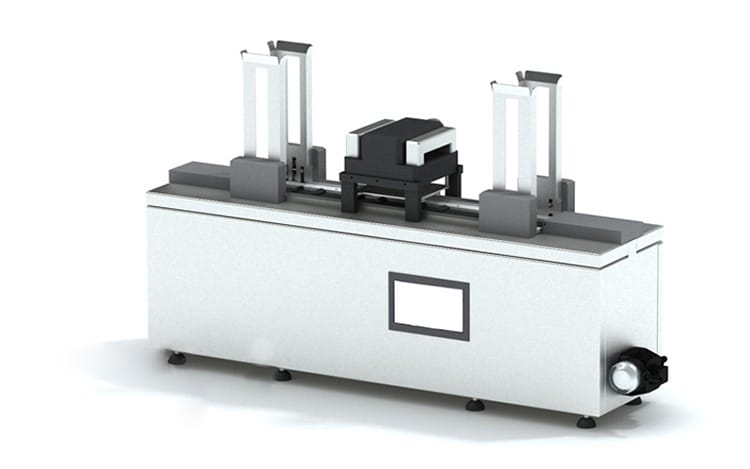Introduction
Enzyme-Linked Immunosorbent Assay (ELISA) is a widely used laboratory test that detects and quantifies the presence of specific substances, such as antibodies, antigens, or proteins, in a sample. ELISA plays a crucial role in medical diagnostics, research, and various fields of biology. This article will discuss the steps involved in an ELISA test, the interpretation of results, the four types of ELISA, and the associated risks.
- Introduction to ELISA
Enzyme-Linked Immunosorbent Assay (ELISA) is an immunological test that relies on the specific binding between an antibody and an antigen. It is widely used to detect and quantify various substances, such as infectious agents, antibodies, hormones, and biomarkers. ELISA washer is based on the principle of antigen-antibody interactions and utilizes enzymatic reactions to generate measurable signals.
- Steps Involved in an ELISA Test
The typical steps involved in an ELISA test include the following:
- Coating: The first step is immobilizing the antigen or antibody of interest onto a solid surface, such as a microplate well, by adsorption or covalent binding.
- Blocking: To prevent nonspecific binding, the surface is treated with a blocking agent, such as bovine serum albumin (BSA) or milk proteins.
- Sample and Standards: The test sample and a series of standards with known concentrations are added to the wells.
- Incubation: The plate is incubated to allow the antigen or antibody in the sample to bind specifically to the immobilized counterpart.
- Washing: Unbound substances are removed by washing the plate, typically with a buffer solution.
- Detection: A secondary antibody, conjugated with an enzyme, is added to the wells. This antibody binds to the target antigen or antibody, forming a sandwich complex.
- Substrate Addition: A substrate specific to the enzyme is added, initiating a colour change or producing a fluorescent signal.
- Measurement: The intensity of the generated signal is measured using a spectrophotometer or a fluorescence reader.
- Data Analysis: The results are compared to the standards to determine the concentration of the target substance in the sample.
- Interpreting ELISA Test Results
The interpretation of ELISA test results depends on the specific assay and target substance. Common interpretations include:
- Positive Result: A high signal intensity compared to the negative control indicates the presence of the target substance.
- Antagonistic Result: A low signal intensity comparable to the negative control suggests the target substance’s absence or deficient concentration.
- Quantitative Result: By comparing the signal intensity of the sample to the standard curve, the concentration of the target substance can be determined.
- Four Types of ELISA
There are four main types of ELISA:
- Direct ELISA: In this type, the antigen of interest is immobilized, and a labelled primary antibody directly binds to it. The signal is directly proportional to the amount of antigen present.
- Indirect ELISA: The antigen is immobilized, and a primary antibody specific to the target antigen is added. A secondary antibody, labelled with an enzyme, binds to the primary antibody. The signal is proportional to the amount of bound secondary antibody, providing amplification.
- Sandwich ELISA: This method involves immobilizing a capture antibody that binds to the target antigen. The antigen in the sample binds to the capture antibody, and a detection antibody, labelled with an enzyme, forms a sandwich complex. The signal is proportional to the amount of captured antigen, providing high sensitivity.
- Competitive ELISA: The sample antigen competes with a labelled antigen for binding to a limited number of specific antibodies. The signal is inversely proportional to the amount of sample antigen, enabling the detection of inhibitors or competition for binding sites.
- Risks Associated with ELISA
Although ELISA is a widely used and reliable assay, there are a few risks and limitations to consider:
- False Positives or Negatives: Nonspecific binding or cross-reactivity with similar molecules can produce inaccurate results.
- Sample Contamination: Contamination during sample collection or handling can introduce errors.
- Assay Variability: Variations in assay conditions, such as temperature, incubation time, or reagent quality, can impact results.
- Limitations of Sensitivity: The sensitivity of ELISA may vary depending on the target substance and assay design.
Conclusion
ELISA is a versatile and widely employed laboratory test that detects and quantifies specific substances in various samples. By following the steps of coating, blocking, incubation, detection, and measurement, scientists can obtain valuable information about antigens, antibodies, and other molecules of interest. The interpretation of results depends on the assay type, and careful consideration of associated risks and limitations is necessary for accurate and reliable testing.



































